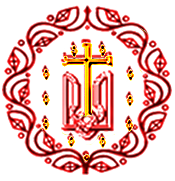12/25 June 2024 No: 12/25-6:24
UKASE
We +MICHAEL, by the Grace of God, Primate of the Orthodox Church of America and Dependencies – Ukrainian Autocephalous Orthodox Church in the United States and Vicar for the Autonomous Synod of Bishops, Apostolic Orthodox Church, in response to negative and incorrect judgments, we wish to clarify facts regarding the recent Ordination of a Zimbabwean Woman as a Deacon for the Alexandrian Patriarchate.
Historically, after the first Order of lay Christians follows the Order of the Diaconate, which was fully open to men and women. The New Testament gives existence of women in the diaconal role: the chief example is Phoebe, said by St. Paul to be a diakonos of the Church in Greece and to have helped him (Romans 16;1-2).
The ritual of ordination of deaconesses during the 6th-8th centuries is well documented by the Great Church of Constantinople. Exactly parallel to the ordination of deacons, deaconesses received Liturgical Ordination through the Laying-on of Hands by the bishop. It took place before the Litany that precedes the Lord’s Prayer. Like the future deacon, she stood before the Iconostasis; wearing a veil. She was led through the Royal Doors to the Bishop. During the prayers of ordination…the bishop placed on her the Orarion…such as the Deacons wear. She received Communion from the Bishop in the same way as the deacons; then he placed the Holy Chalice in her hands. She took it and placed it on the Holy Table but did not in those times bring the Chalice out for Communion; deacons more numerous than the deaconesses. The ordination is thus evidently envisaged as ordination to a Major Order. Deaconesses were forbidden to marry after ordination and in Byzantine civil law were regarded as members of the clergy. The mother of St. Gregory the Theologian was a deaconess and the wife of St. Gregory of Nyssa was ordained deaconess when her husband became a bishop. It was always understood that the ordination of deaconesses was not a step to the male priesthood.
Recently, opposing views were made regarding the Ordination of a deaconess by the Alexandrian Patriarchate in Zimbabwe, it must be understood that this was not the first such ordination in modern times. In 2016, His Beatitude +THEODOSIOS II, Pope and Patriarch of Alexandrian and all Africa, personally ordained into “ecclesiastic ministry” six women to the diaconate. And, as early as 1982, there were women ordinations to the diaconate in the Armenian Orthodox Church. Our Jurisdiction has had them since mid 1960.
As Hierarchs, we are guardians of the Orthodox Church and her Sacred Traditions. It is therefore right for us to use every legitimate means given to us to promote and grow the Holy Church of Christ. Deaconesses have been a part of the Orthodox tradition from Apostolic times and should be revitalized for the participation of eligible women, with a legitimate vocation, in our Church’s liturgical life.
UKASE
We +MICHAEL, by the Grace of God, Primate of the Orthodox Church of America and Dependencies – Ukrainian Autocephalous Orthodox Church in the United States and Vicar for the Autonomous Synod of Bishops, Apostolic Orthodox Church, in response to negative and incorrect judgments, we wish to clarify facts regarding the recent Ordination of a Zimbabwean Woman as a Deacon for the Alexandrian Patriarchate.
Historically, after the first Order of lay Christians follows the Order of the Diaconate, which was fully open to men and women. The New Testament gives existence of women in the diaconal role: the chief example is Phoebe, said by St. Paul to be a diakonos of the Church in Greece and to have helped him (Romans 16;1-2).
The ritual of ordination of deaconesses during the 6th-8th centuries is well documented by the Great Church of Constantinople. Exactly parallel to the ordination of deacons, deaconesses received Liturgical Ordination through the Laying-on of Hands by the bishop. It took place before the Litany that precedes the Lord’s Prayer. Like the future deacon, she stood before the Iconostasis; wearing a veil. She was led through the Royal Doors to the Bishop. During the prayers of ordination…the bishop placed on her the Orarion…such as the Deacons wear. She received Communion from the Bishop in the same way as the deacons; then he placed the Holy Chalice in her hands. She took it and placed it on the Holy Table but did not in those times bring the Chalice out for Communion; deacons more numerous than the deaconesses. The ordination is thus evidently envisaged as ordination to a Major Order. Deaconesses were forbidden to marry after ordination and in Byzantine civil law were regarded as members of the clergy. The mother of St. Gregory the Theologian was a deaconess and the wife of St. Gregory of Nyssa was ordained deaconess when her husband became a bishop. It was always understood that the ordination of deaconesses was not a step to the male priesthood.
Recently, opposing views were made regarding the Ordination of a deaconess by the Alexandrian Patriarchate in Zimbabwe, it must be understood that this was not the first such ordination in modern times. In 2016, His Beatitude +THEODOSIOS II, Pope and Patriarch of Alexandrian and all Africa, personally ordained into “ecclesiastic ministry” six women to the diaconate. And, as early as 1982, there were women ordinations to the diaconate in the Armenian Orthodox Church. Our Jurisdiction has had them since mid 1960.
As Hierarchs, we are guardians of the Orthodox Church and her Sacred Traditions. It is therefore right for us to use every legitimate means given to us to promote and grow the Holy Church of Christ. Deaconesses have been a part of the Orthodox tradition from Apostolic times and should be revitalized for the participation of eligible women, with a legitimate vocation, in our Church’s liturgical life.


